|
Why Men Pay For It – notes
A Production Story by Don Parham
How the Film Came About
It's fair to say that 'Why Men Pay For It' was inspired by the book, Conversations In a Brothel - Men Tell Why They Do It, written by Sydney journo and writer, Jacquelynne Bailey. SBS commissioning editor, Marie Thomas, had picked the book up by chance while waiting for a plane one day and thought it would be a great idea for a film. She felt that many films had been done on prostitutes, madams, and the sex industry but never had the male clients been captured on film. Marie actually rang me from the airport and said she had an idea she wanted to discuss. I had recently been pitching, without success, a number of ideas to her including a film of women talking about their personal experience of abortion (as it turned out, I got this film up several years later after pitching it to another commissioning editor at SBS). Marie thought I would be the man to make the film because, as she put it, I had an "interest in exploring intimate subjects". I guess she was referring to my earlier films that had explored relationships between men and women via a range of different social issues, namely - domestic violence (Deadly Hurt - SBS, 1994), marriage and divorce (We're All Independent Now - SBS, 1995), and adultery (Love's Tragedies - ABC, 1999).
The way this film got off the ground was eerily similar to how my film on adultery, Love's Tragedies, came about several years earlier with the ABC. On that occasion, I had also been pitching other ideas to a commissioning editor including a film about the Hindmarsh Bridge affair that would have been a timely examination of the relationship between black and white Australia. Sadly, after months of research and writing of several drafts of the script, this film fell over at the last minute. At the same time, the commissioning editor said he had just received a copy of a BBC doco about adultery and he thought we should do our own Australian take on the subject. He asked if I would be interested. I thought, well, all ideas are a creative challenge and, in this game, you don't knock films back when they get offered to you. At the end of the day, it does seem that I have earnt a reputation as one who is willing to tackle the "intimate subjects".
Finding the Men
I was pleased to get a new film off the ground but soon realised there was one big catch ... would we be able to find men willing to talk on camera? I tracked down Jacquelynne Bailey and asked her if any of the men she interviewed for her book would be willing to talk on camera and she said absolutely not, not even one. So I had to start from scratch.
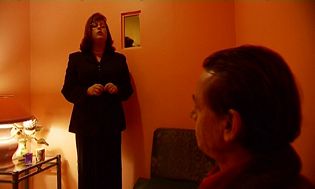
I remember well the Monday morning where I realised I just had to jump in and tackle the challenge head on. I got the local paper out and turned to the 'adult services' section. I sat there looking at the paper for about an hour, rehearsing my lines ... "Hi, my name's Don Parham and I'm making a film for SBS about prostitution and ...". I thought 'what reaction will I get', 'where do I take the conversation after the opening line', 'how will I explain that I'm really after the men', 'will they help me find them', 'why should they, what's in it for them'?
As it turned out, after my first day of phoning, one establishment said 'sure, come on over'. It wasn't much success for a whole day's work, but it was a start. I decided to run ads in some of the local papers around Melbourne and to keep phoning. I eventually found all the men for my film through a mixture of the contacts I made with a few brothels and by running ads.
This is what I like about being a 'one film at a time' film-maker ... it's so hands on, you see the birth of a film idea through all the stages of production to the final stages of sitting here writing these stories. It's an amazing journey.
A Bit More About Finding the Men
I had no strong expectations about the sort of men who would eventually present themselves for this film. Indeed, in every film I make I take a slightly spiritual view of the process by which you find the people who are right for that film. It's a wonderfully random but inspired exercise that I find always leaves me with a feeling of ... "thankyou God for sending me X or Y, they were so meant to be in this film."
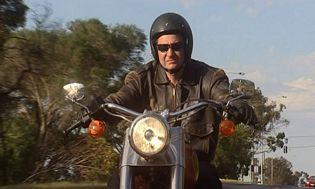
I pretty much feel that way about all the men in 'Why Men Pay For It' . But I guess I have a couple of favourites. Poor, damaged, slightly crazy Arthur is one of them. I ask you ... who could have scripted an Arthur?
Rosco is probably my other favourite. I was hanging out late one night at one of the brothels featured in the film, The Retreat, when Rosco wandered in with two mates. The girls had been asking all their clients if they would talk to me but there had been no takers that night until Rosco came along. I got his details and we arranged to meet the next day.
As I was driving into the heartland of shopping complex suburbia it dawned on me that Rosco might still be living "at home". He had the demeanour of a kid who hadn't left home yet. My head filled with questions - 'what if his parents are there', 'what has he told them', 'do they know I'm coming', 'what will I say to them'? My heart sank as I arrived at the address he gave me - a pristine brick veneer with manicured garden and caravan in the front yard. I wondered if I should just leave now and save everyone a lot of embarassment. My worst fears were realised as I walked down the lovingly paved driveway. Rosco's mum was already halfway up the drive.
"What's this, who are you, what's he telling me about a film or something?"
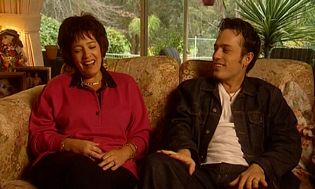
Interviewing politicians and ex Prime Ministers like Gough Whitlam (which I've done) is easier than this - everything is so orchestrated by their 'people', nothing is left to chance. Being confronted by Rosco's mum, in contrast, leaves you with nowhere to hide. In another way, it's documentary heaven - out of your control, edgey, new, anything could happen. It's what we get off on. Suffice to say that, within the hour, I was cheerily skipping back up said driveway with not one, but two, notches on my belt. Not only did I have Rosco for the film ... I had mum as well!
What a find they both were for the film. I think when viewers spot in their TV guides a film called 'Why Men Pay For It', the last thing they'll expect is the "wakey, wakey" scene with Rosco and his mum. Documentary film-makers like to spring surprises and are always attracted to contradiction. Rosco and Jan deliver on both these fronts. Not everyone who makes a habit of visiting prostitutes would turn around and say, as Rosco does, that he could never date such a girl because she would have other men's sperm inside her. And not many men would say this with their mum sitting next to them.
A Word on the Style of the Film
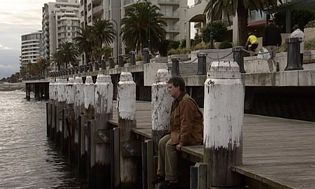
I chose to shoot this film "prettily" using award winning DOP, Kevin Anderson, whose lighting is the best around. The camera was hardly ever off the tripod and there are lots of slow scenic pans and luxurious wide shots. It's a style seen less often in social issue docos these days. I think I did it partly to spring one of those surprises I've talked about. I thought people's expectation of a film on this subject would be that it would have a gritty, grainy, hand-held look. So I wanted to surprise. More importantly, I feel the pretty look and leisurely pace of the film adds dignity to the mens' stories. It gives them time to speak. It gives us time to listen.
The Statistics in the Film
We felt we wanted to do more than have a bunch of disparate stories by men who pay for sex. We wanted to put the men in a context. Easier said than done. Research, especially Australian research on the male clients, was virtually non-existent. Even in the international literature there was a dearth of good material on the clients of prostitutes. When we did come across something it often disappointed because it was either based on unrepresentative, self-selected samples, the samples were too small or the research was only based on anecdotal evidence of workers in the industry.
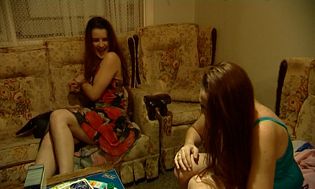
Very late in the piece we stumbled across TheAustralian Study of Health and Relationships (2003). We felt like we'd struck gold. It had the authority of three major universities behind it - La Trobe Uni in Melbourne, Sydney Uni and the University of NSW. It was hot off the press. Its methodology was sound. It used a large sample of over 10,000 men and more than 9,000 women. And it was Australian.
In contrast to the figure of 15.6% of men having been with a prostitute at least once in their lifetime, the study found that the figure for women was 0.1%. Of the men who had been with a prostitute at least once in their lifetime, 97% had been with a female prostitute and 3% with a male prostitute. ALL of the women who had paid for sex had paid a man. These figures underpin our choice to focus in the film on the male clients of female prostitutes, which is far and away what the industry is about.
Interestingly, we found that we had some questions which the people who designed the study had not asked. Probably the most important one was - "what percentage of the men who reported visiting a prostitute at least once in their lifetime were married at the time of that visit?" The significance of this question is expanded on below. There were other questions and correlates that hadn't yet been crunched by those interpreting the raw data and so we thought, what the hell, let's crunch our own numbers. We commissioned new correlations to be fed in. which produced some intriguing figures, especially on the marital status of men who pay for sex.
Indeed, best of all for a documentary film-maker, we found the research exploded some myths!
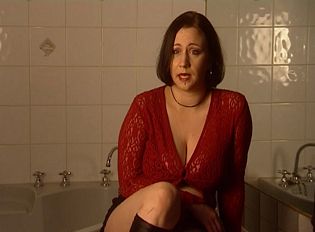
What Myths Are Exploded?
Myth No. 1 - Everyone is doing it
As said earlier, the study found that 15.6%, or about one in six men, have been with a prostitute at least once in their lifetime and 1.9%, or about 1 in 50, in the previous year. These figures are considerably lower than those you often hear thrown around in discussions on this subject.
The authors of the study have written that "the proportion of Australian men who have paid for sex is generally similar to the international average". So, at the end of the day, the 15.6% and 1.9% figures are in line with methodologically sound research from overseas.
Myth No. 2 - Most men using prostitutes are married
According to TheAustralian Study of Health and Relationships (2003), nearly half of the men who reported having been with a prostitute at least once in their lifetime, are now married. Unfortunately, the question that was never asked in the original survey was, "were you married at the time that you visited a prostitute?" Because this question was not asked, we have to go to the statistics for the men who have visited a prostitute in the previous year. This gives us a much more reliable figure for marital status and other correlates. We can also use these figures to make the statement ... "in an average year, X% of prostitutes' clients are ...". This is how we have worded the captions in the film.
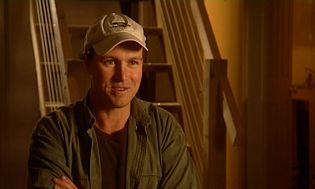
So what do we find? Using the statistics for the men who have visited a prostitute in the previous year we see that 15% were married, 16% were separated or divorced, and nearly 69% reported that they had never been married.
Because of the many variables in peoples' partnering arrangements, we felt that the other figure that was important for our film was the percentage of men with live-in partners. This is perhaps the best way of describing a marriage-like relationship. So here we ignored whether someone was married, divorced, separated or never married and just looked at whether that person had a live-in partner. The study found that, of the men who had visited a prostitute in the previous year, 76% had no live-in partner.
A PRODUCTION STORY
by Don Parham
Writer/Director
It's been a while since I've felt so close to being smacked in the mouth. I'd probably have to go back to the footy oval at Waverley High where the "Jordie Boys" played a very different style of game to what I was used to in the Saturday morning under 15's competition. The Jordie Boys were from the public housing ghetto of Jordanville whereas, on Saturday mornings, I represented the much more respectable neighbouring suburb of Mt Waverley.
Back then, Mt Waverley was full of what we'd now call aspirational voters. It was very WASP-ish. We all grew up knowing the rewards we would reap from our hard work. The Jordie Boys showed me another way. "Touch that ball an' yer dead f...face" is roughly how I recall the conversation going as the opposition player and I ran towards the ball. How clumsy of me to stumble at the critical moment.
Thirty years later, and now immersed in what my hairdresser thinks must be a "very interesting" career as a documentary film-maker, I figured I'd gone about as far as you can go in life from a Jordie Boys moment. But I was wrong.
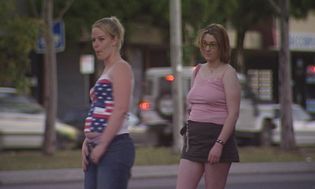
We were down in Melbourne's red light district, St.Kilda, filming some set up shots with a couple of streetgirls we'd paid to pose for us. We'd radio miked this girl so we could hear the colourful exchange between client and "service provider" (as they like to call the girls at the more up market establishments).
A car pulls up.
"Fifty for oral, eighty for straight sex, a hundred for both."
The car drives off.
I'm not quite sure what I was expecting but after hearing this routine about twenty times it all seemed a little, well, anti-climactic. Anyway, the crew and I hid in the shadows of a nearby laneway and, armed with a long lens, got the shots we needed.
About an hour later we were around the corner packing up and ready to go on to the next location. I heard some shouting coming from up the road. I saw that a ute had pulled up next to the soundie who was loading stuff into the boot of his car.
"Who's in f...ing charge here?" they kept shouting.
I wandered over to check out what was going on. It was only when I got close and said, "what can I do for you guys?" that I realised we had a "situation" on our hands. There were two guys in the car. They looked to be in their mid to late 20's. I spoke to the guy in the passenger seat. He was drunk and looked the more aggressive of the two.
"Did you f...ing film us ya c..t? What's this f...ing for?" I must admit I was rather surprised that our attempt at concealing ourselves by hiding down the laneway had been so spectacularly unsuccessful. He kept repeating these questions over and over. I said we were doing an SBS documentary and that, no, we hadn't filmed them, we had set up the shots with our own drivers. This was half true because we had set up some shots but we had filmed real cars as well. However we wouldn't have used any of those shots in a way that allowed people to be identified.
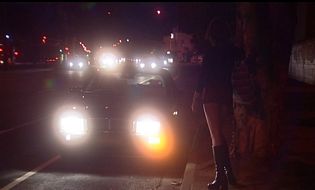
The aggro guy kept shouting his questions. My natural instinct was to continue speaking in a calm and quiet voice. He kept shouting. I kept repeating the same answer. It looked like my attempts at lowering the temperature had failed when both guys got out of the car. They were big. Shit I hate being medium sized. I've put in my order to come back as an oaf next time. I'd really like to experience it.
It's funny what you do in moments like these. I remember having a certain resignation that well, this was it, I was going to be thumped in the face. Some small part of me was even a little curious to see what it would be like. I also had what I call a 'Ned Kelly' experience, a feeling of retreating inside a protective helmet, of peering out through a little hole at the danger unfolding outside. More pragmatic instincts were also kicking in. I remember rehearsing in my mind how I would raise my arm in defence to protect my face should the wild man take a swing.
Strongest of all was my hatred of violence and my contempt for these guys. I knew they were not worth getting beaten up for, that the temporary discomfort of staying cool would produce the best outcome. I knew I had to absorb their alcohol fuelled rage, that it was a temporary madness, that they wanted to spill blood to appease the guilt that flows from a night of gutter crawling.
The aggro one now paced around me like a beast stalking its prey. But I sensed the worst was over. He didn't lash out. He grew quieter. The two men got back into the car. Shouting some final threats that, if they appeared in the film, they would come and get me, the car screeched off around the corner.
I was left with the feeling that I had just been given a very real insight into the kind of men who use prostitutes. Perhaps it's just the sort of men who inhabit the street scene, the gutter crawlers as the cops like to call them. But then I remembered Arthur expressing his indignation about that term. "I work, I have a home, I pay taxes that pay for the cops", he said with great rhetorical flourish. "How dare they call me a gutter crawler." I realised that these Jordie Boys revisited are not the sort of men who are in my film. But clearly they exist and some working girls confront that reality every day and use their wits to survive just like I did.
As I drove home, reflecting on the day's shoot, I was comforted by the thought that the audience for Why Men Pay For It had, perhaps, just increased by two.
|